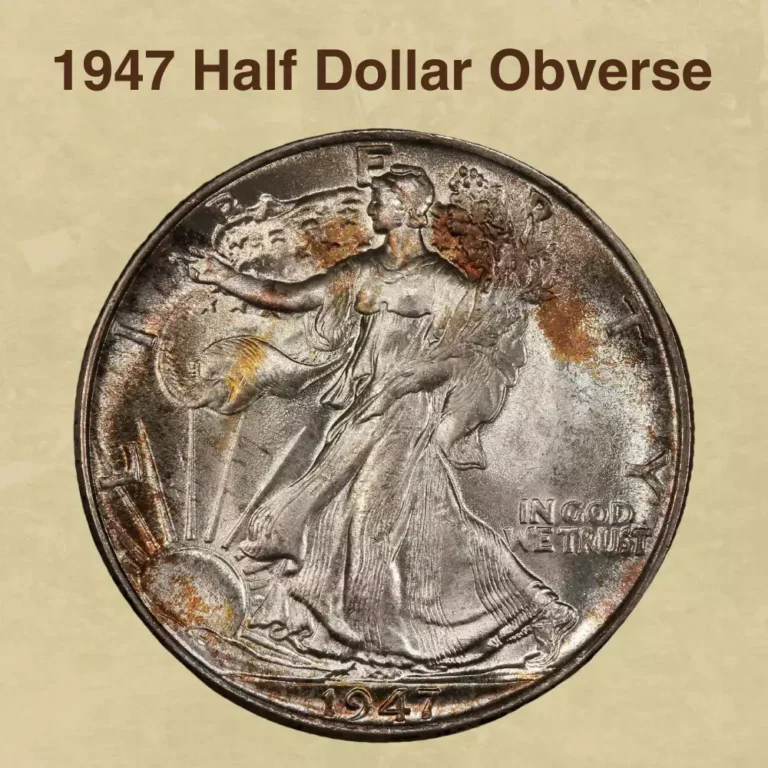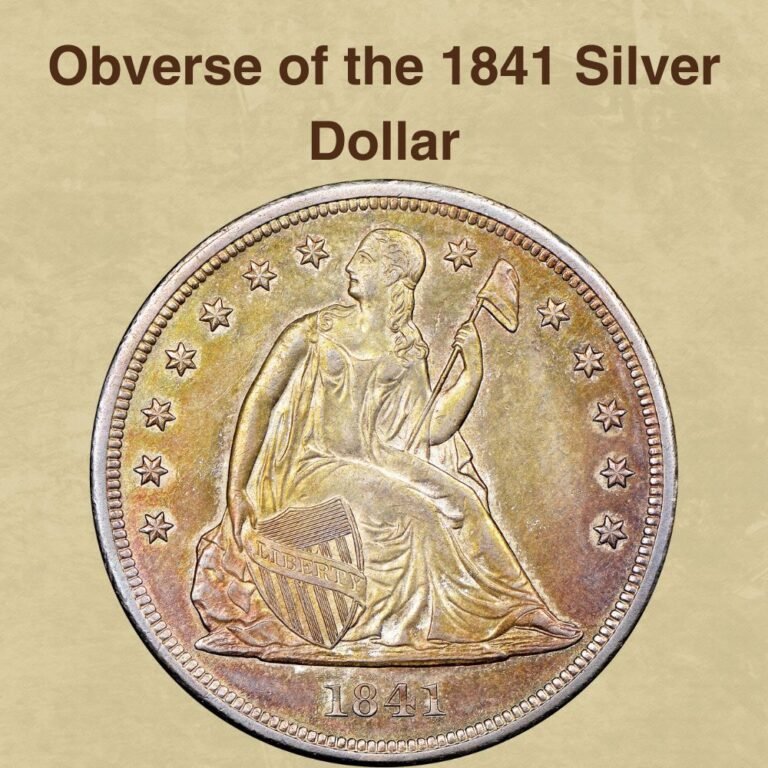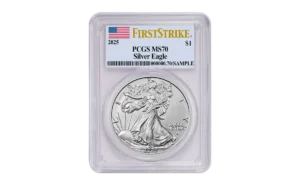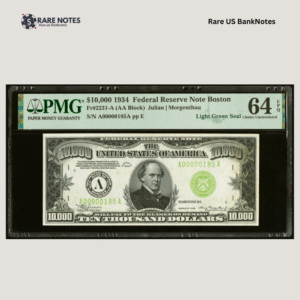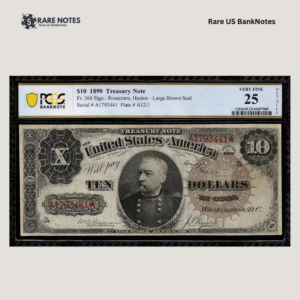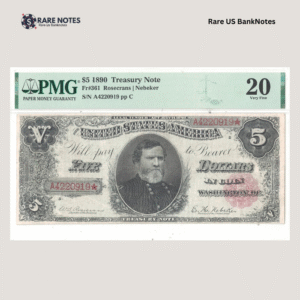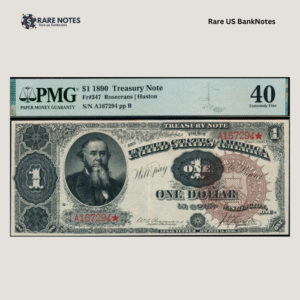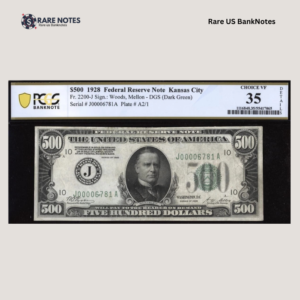The 1918 Walking Liberty Half Dollar emerged during America’s final year in World War I, as economic pressures mounted across the nation. The demands of wartime commerce were immense, and the vast majority of these silver half dollars entered immediate circulation, remaining there until heavily worn.
This scarcity in higher grades has created significant value appreciation. Auction records show a 1918-D in MS66+ condition reaching $340,750 in 2021, while a 1918 Philadelphia issue in the same grade achieved $45,600 in January 2022.
Today, understanding the 1918 Half Dollar’s value requires examining how wartime economics and subsequent decades have shaped its worth in today’s collecting market.
1918 Half Dollar Value By Variety
The following chart shows current market values for 1918 Walking Liberty Half Dollars across different mint marks and grade conditions.
1918 Half Dollar Value Chart
| TYPE | GOOD | FINE | AU | MS | PR |
|---|---|---|---|---|---|
| 1918 No Mint Mark Half Dollar Value | $34 | $148 | $503 | $7,439 | — |
| 1918 D Half Dollar Value | $41 | $242 | $992 | $46,881 | — |
| 1918 S Half Dollar Value | $36 | $117 | $518 | $23,424 | — |
Tip: Use our CoinValueChecker App for real-time variety identification and current market values.
1918 Half Dollar Market Trend
Market Interest Trend Chart – 1918 Half Dollar
The market interest trend for 1918 Half Dollars demonstrates the cyclical nature of numismatic collecting, with notable fluctuations over the past decade.
The chart reveals periods of heightened collector activity, particularly during 2015-2019, followed by more stabilized interest levels in recent years.
The dramatic spike in February 2019 reflects a period of intense market activity, likely driven by increased awareness of the coin’s historical significance and scarcity in higher grades.
These trend patterns highlight how collector sentiment and market dynamics can shift over time, influenced by factors such as precious metal prices, economic conditions, and generational changes in collecting preferences.
Understanding these market cycles is essential for collectors and investors seeking to gauge the broader appeal of these World War I-era coins within the current numismatic landscape.
For a comprehensive view of how 1918 Half Dollars compare to other collectible coins, refer to the US Coin Market Trend Ranking (Top 100).
History of the 1918 Half Dollar
The 1918 Walking Liberty Half Dollar represents a crucial chapter in American coinage history, produced during the final year of World War I when wartime economic demands created enormous need for circulating coinage.
By 1915, Mint Director Robert W. Woolley had initiated the replacement of the outdated Barber coinage designs that had served since 1892. Through a Commission of Fine Arts competition, renowned sculptor Adolph A. Weinman was selected to create new designs for the half dollar.
The Walking Liberty series debuted in 1916, though Weinman’s intricate design presented striking challenges for the mints. In 1918, Chief Engraver George T. Morgan attempted to improve production quality by modifying certain design details, but these efforts proved largely unsuccessful.
Most 1918 half dollars immediately entered heavy commercial use to meet wartime economic pressures, and this intensive circulation meant that few examples survived in pristine condition.
The coin was minted at three facilities: Philadelphia with 6,634,000 pieces (no mint mark), Denver producing 3,853,040 coins (D mint mark), and San Francisco striking 10,282,000 examples (S mint mark).
The significantly lower Denver mintage makes the 1918-D considerably scarcer today, while the Philadelphia and San Francisco issues, despite higher production numbers, remain challenging to find in uncirculated grades due to their extensive wartime circulation.
Also Read: 10 Most Historic Years of Walking Liberty Half Dollar (1916-1947)
Is Your 1918 Half Dollar Rare?
1918 No Mint Mark Half Dollar
1918-D Half Dollar
1918-S Half Dollar
The rarity rankings reveal the exceptional status of 1918 Walking Liberty Half Dollars within the series. The 1918-D leads with an impressive “Divine” rating and ranks 3rd among all Walking Liberty Half Dollars, reflecting its low mintage of just 3.8 million pieces combined with heavy wartime circulation.
The 1918-S also achieves “Divine” status at 4th place, despite its higher mintage of over 10 million coins, demonstrating how circulation patterns can create scarcity regardless of initial production numbers.
The 1918 Philadelphia issue, while more common with a “Legendary” rating and 21st place ranking, remains significantly scarcer than most later-date Walking Liberty Half Dollars.
These high rarity scores underscore why 1918-dated coins command substantial premiums in today’s market, particularly in uncirculated grades where examples become exceptionally difficult to locate.
For collectors seeking to understand the complete rarity landscape of Walking Liberty Half Dollars, our CoinValueChecker App provides detailed rarity analysis for all dates in the series.

To see where other key dates rank and discover additional rare Walking Liberty issues, explore the comprehensive Walking Liberty Half Dollar Rarity Ranking (Top 100).
Key Features of the 1918 Half Dollar
The 1918 Walking Liberty Half Dollar showcases Adolph Alexander Weinman’s acclaimed design, representing the third year of this iconic series that circulated from 1916 to 1947.
The Obverse of the 1918 Half Dollar

The 1918 Half Dollar obverse shows Lady Liberty walking toward the rising sun. Her right arm extends forward while her left arm carries branches of olive and oak, representing peace and strength. The American flag flows behind her as drapery.
The word “LIBERTY” appears along the upper rim, with “IN GOD WE TRUST” positioned in the right field. The date “1918” is located at the bottom center of the coin.
The Reverse of the 1918 Half Dollar

The reverse features a bald eagle perched on a rocky crag with wings partially spread. A mountain pine branch grows from the rock beneath the eagle.
“UNITED STATES OF AMERICA” curves along the top rim, while “HALF DOLLAR” appears at the bottom. The motto “E PLURIBUS UNUM” is positioned to the left of the eagle.
Mint marks appear below the pine branch when present—”D” for Denver or “S” for San Francisco, while Philadelphia coins have no mint mark. Weinman’s initials “AW” are located beneath the eagle’s tail.
Other Features of the 1918 Half Dollar
The 1918 Walking Liberty Half Dollar measures 30.00 mm in diameter, weighs 12.50 grams, and has a thickness of 1.8 mm. The coin contains 90% silver and 10% copper, providing 11.25 grams of silver content.
1918 Half Dollar Mintage & Survival Data
1918 Half Dollar Mintage & Survival Chart
Survival Distribution
| Type | Mintage | Survival | Survival Rate |
|---|---|---|---|
| No Mint | 6,634,000 | 300,000 | 4.5222% |
| D | 3,853,040 | 175,000 | 4.5419% |
| S | 10,282,000 | 150,000 | 1.4589% |
The mintage and survival statistics for 1918 Walking Liberty Half Dollars reveal significant patterns that help explain current market values. The San Francisco mint produced the highest quantity at 10,282,000 coins, followed by Philadelphia’s 6,634,000 pieces, while Denver had the lowest output at 3,853,040 coins.
The survival rates present a contrasting picture. Despite having the highest mintage, the 1918-S shows the lowest survival rate at just 1.46%, with only an estimated 150,000 coins remaining today.
The Philadelphia and Denver issues demonstrate similar survival rates of approximately 4.5%, with 300,000 and 175,000 coins respectively surviving from their original mintages.
These survival patterns reflect the heavy wartime circulation that affected all three mint marks, but particularly impacted the San Francisco coins. The dramatic difference between original production numbers and current survival estimates demonstrates why condition rarity plays such a crucial role in 1918 Half Dollar valuations.
For comprehensive survival data across the entire series, consult the Walking Liberty Half Dollar Survival Ranking (Top 100).
1918 Half Dollar Grading
Grading 1918 Walking Liberty Half Dollars requires careful attention to specific design elements due to inherent striking challenges. The 1918 Philadelphia issue is notably tough to locate in circulated grades, with mint state examples being very scarce and MS65 specimens considered rare.
The 1918-D represents one of the great condition rarities in the series, with gems showing dramatic price increases—the finest known grade is MS66+, which is extremely rare.
Key grading areas include Liberty’s left hand and breast, the eagle’s breast feathers, and wing details, as these high-relief areas showed weakness even on newly minted coins.
Understanding these grading nuances is essential since condition directly impacts value—a 1918-D can range from hundreds in lower grades to over $340,000 in top condition.
For collectors seeking immediate grade assessment, our CoinValueChecker App offers instant grade evaluation to help determine your coin’s condition before professional certification.

For comprehensive grading techniques and visual examples, refer to our detailed guide on How to Grade Walking Liberty Half Dollar.
1918 Half Dollar Value Guides
The 1918 Walking Liberty Half Dollar series comprises three distinct varieties based on their mint of origin:
- 1918 No Mint Mark Half Dollar (Philadelphia Mint)
- 1918-D Half Dollar (Denver Mint)
- 1918-S Half Dollar (San Francisco Mint)
The Philadelphia issue, with no mint mark, had the second-highest production. The Denver variety stands as the key date with the lowest mintage and exceptional rarity in mint state condition. The San Francisco issue, despite having the highest production numbers, suffers from typically weak strikes, making all three varieties significant to collectors.
1918 No Mint Mark Half Dollar Value
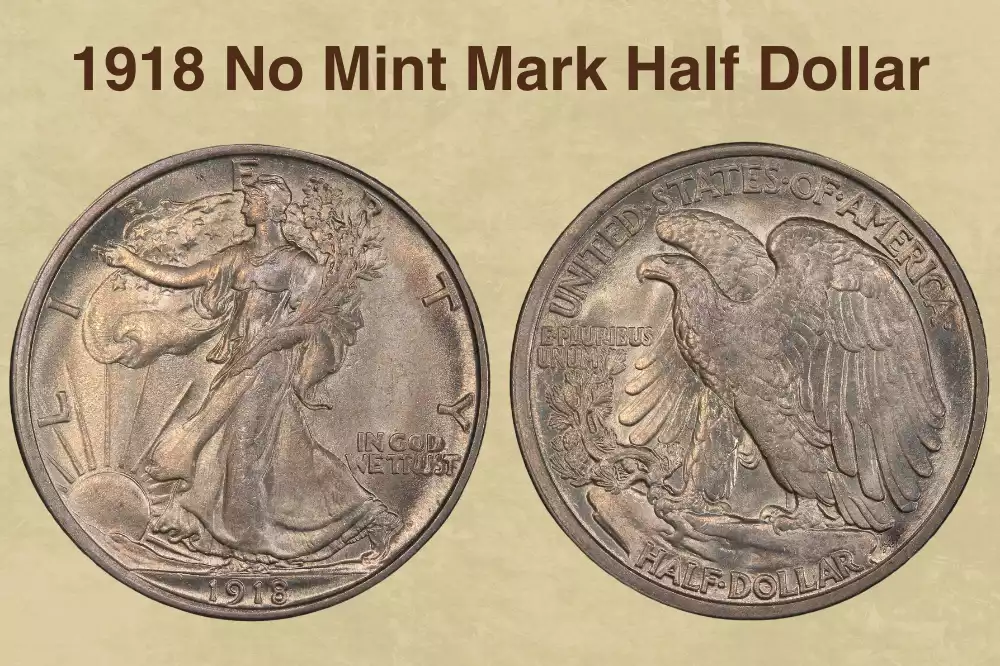
The 1918 No Mint Mark Walking Liberty Half Dollar presents an unusual collecting challenge. With a mintage of 6,634,000 pieces from the Philadelphia Mint, it had substantial production numbers, yet heavy wartime circulation has resulted in a survival rate of approximately 4.52%, leaving an estimated 300,000 coins in existence today.
Like most Philadelphia issues, the 1918 is usually well struck, yet mint state examples are very scarce and MS65 or better specimens are rare.
According to auction records, a 1918 Philadelphia issue in MS66+ grade achieved $45,600 in January 2022, demonstrating the premium collectors place on high-grade survivors of this challenging date.
1918 No Mint Mark Half Dollar Price/Grade Chart
Price by 1-70 Grade (Latest Auction Records Included)





